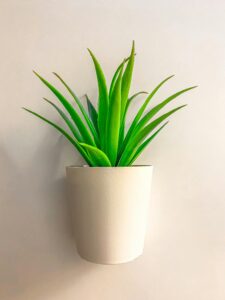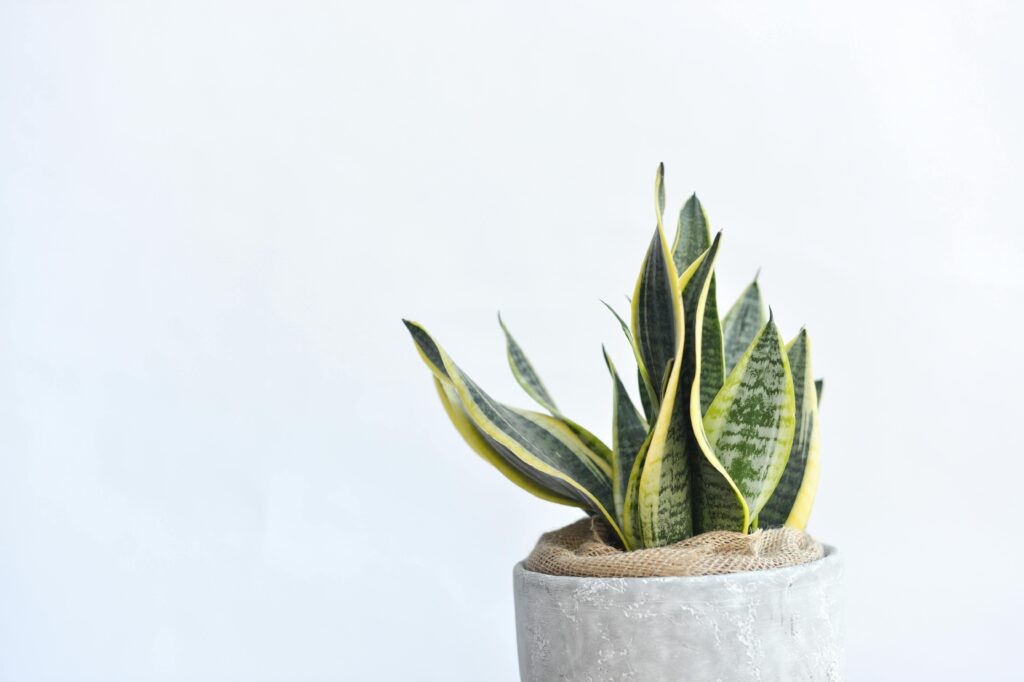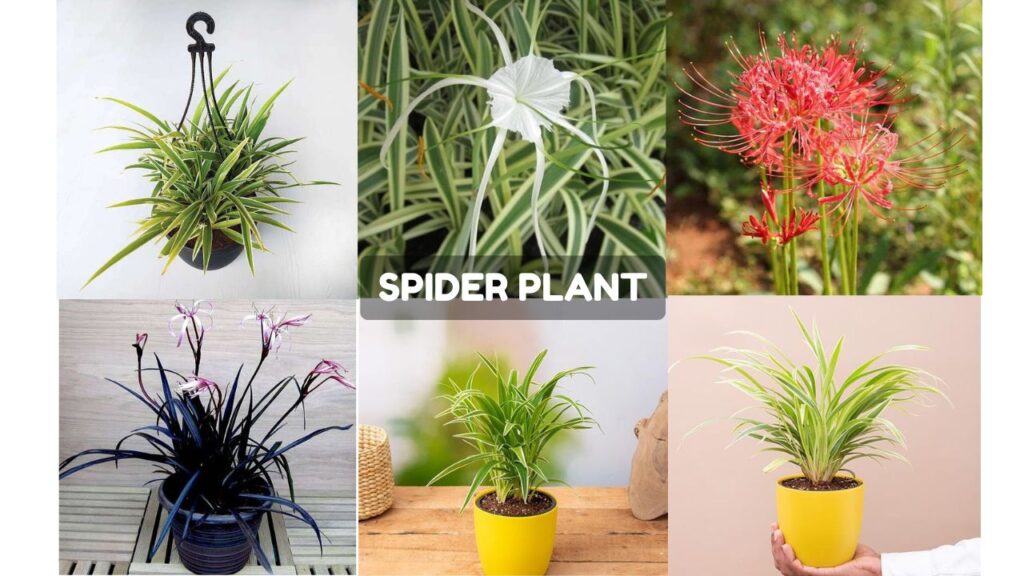Snake Plant Care & Benefits: The Ultimate Indoor Plant Guide for Beginners
Introduction
The snake plant (Sansevieria), also known as mother-in-law’s tongue, is one of the easiest and most rewarding indoor plants for beginners. Known for its tall, upright leaves and striking green patterns, this hardy plant adds a modern touch to any space while requiring minimal care. It’s drought-tolerant, thrives in low light, and even helps purify indoor air by removing toxins—making it perfect for bedrooms, living rooms, and offices.
Whether you’re new to gardening or simply want a low-maintenance plant, the snake plant is a top choice. In this ultimate guide, we’ll cover everything you need to know about snake plant care, watering, light needs, and its many health benefits, so your plant thrives effortlessly year-round.
What Is a Snake Plant?
The snake plant is a tropical, evergreen succulent known for its stiff, sword-like leaves. Native to West Africa, it thrives in both bright and low-light conditions. Its adaptability makes it one of the most popular indoor houseplants worldwide.

Common Names:
- Snake Plant
- Mother-in-Law’s Tongue
- Sansevieria
- Viper’s Bowstring Hemp
Snake Plant Benefits
1. Air Purifier
Snake plants are natural air purifiers. According to a NASA Clean Air Study, they filter indoor pollutants such as:
- Formaldehyde
- Benzene
- Xylene
- Toluene
2. Produces Oxygen at Night
Unlike most plants, the snake plant performs Crassulacean Acid Metabolism (CAM)—releasing oxygen during the night, making it perfect for bedrooms.
3. Improves Indoor Humidity
Snake plants help balance humidity levels by releasing moisture, reducing issues like dry skin, sore throats, and respiratory problems.
4. Stress and Fatigue Reduction
Studies show that greenery like snake plants can reduce stress, boost productivity, and create a calming environment.
5. Vastu & Feng Shui Benefits
In Indian homes, snake plants are believed to bring positive energy, ward off negative vibes, and enhance mental clarity.
6. Pet Dander & Allergen Reduction
They can trap dust and allergens from the air, making your indoor environment cleaner.

Snake Plant Varieties
Some popular varieties include:
- Sansevieria trifasciata ‘Laurentii’ – Most common variety with green leaves edged in yellow.
- Sansevieria trifasciata ‘Zeylanica’ – Features wavy, horizontal green stripes with no yellow edges.
- Sansevieria cylindrica – Cylindrical, stiff leaves that grow upright and often braided.
- Sansevieria ‘Moonshine’ – Pale silver-green leaves with a soft, sleek look.
- Sansevieria ‘Black Gold’ – Dark green leaves with striking golden-yellow margins.
- Sansevieria ‘Futura Robusta’ – Compact variety with gray-green striped leaves.
- Sansevieria ‘Golden Hahnii’ – Dwarf rosette form with yellow and green leaves.
- Sansevieria ‘Twist’ – Twisted, curling leaves with green and yellow variegation.
🌞 How to Care for a Snake Plant
1. Light Requirements
- Thrives in bright, indirect light, but also tolerates low-light corners.
- Avoid direct sunlight—it can burn the leaves.
2. Watering Needs
- Water once every 2–4 weeks.
- Let the soil dry completely between waterings.
- Overwatering is the number one killer of snake plants.
3. Soil Mix
- Use well-draining cactus or succulent mix.
- You can add perlite or sand to regular potting soil.
4. Temperature & Humidity
- Ideal range: 60–85°F (15–29°C).
- Keep away from cold drafts and AC vents.
- Tolerates dry indoor air well.
READ ALSO: how to Grow ZZ Plant: Complete Guide for Beginners
5. Fertilization
- Feed once in spring and summer with a balanced liquid fertilizer.
- No need to fertilize during fall and winter.

6. Repotting
- Snake plants grow slowly and prefer to be slightly root-bound.
- Repot every 2–3 years or when the roots outgrow the pot.
7. Pruning & Cleaning
- Prune dead or damaged leaves with clean shears.
- Wipe the leaves with a damp cloth monthly to remove dust.
How to Propagate a Snake Plant
Snake plants are easy to propagate by:
1. Leaf Cuttings in Soil
- Cut a healthy leaf and let it callous for a day.
- Plant it in moist soil and wait for roots to form.
2. Leaf Cuttings in Water
- Place a cut leaf in water until roots appear.
- Transfer to soil once the roots are 1–2 inches long.
3. Division Method
- Remove the plant from the pot.
- Separate root clumps and replant them in new containers.
Is Snake Plant Safe for Pets?
Unfortunately, snake plants are mildly toxic to cats and dogs. If ingested, they can cause:
- Nausea
- Vomiting
- Drooling
If you have pets, place the plant out of reach or consider pet-safe alternatives.
Where to Place a Snake Plant Indoors?
- Bedroom – Purifies air and releases oxygen at night.
- Living Room – Adds vertical appeal to corners or next to furniture.
- Office Desk – Improves focus and reduces stress.
- Bathroom – Tolerates humidity and low light.
According to Vastu, place the plant in the east or south-east direction for the best energy flow.
Frequently Asked Questions (FAQs)
1. How often should I water a snake plant?
Every 2–4 weeks. Ensure the soil is completely dry before rewatering.
2. Can a snake plant survive in a dark room?
Yes, snake plants can tolerate low light, but they grow better in indirect sunlight.
3. What are the benefits of keeping a snake plant in the bedroom?
It releases oxygen at night, improves air quality, and reduces stress—perfect for sleep.
4. Can I grow a snake plant in water?
Yes, snake plants can be propagated and grown in water temporarily but prefer soil long term.
5. Why are my snake plant leaves turning yellow?
Common causes include overwatering, poor drainage, or root rot.
6. Does a snake plant need fertilizer?
Only during the growing season (spring/summer) with diluted liquid fertilizer.
7. Do snake plants attract mosquitoes?
No, snake plants actually repel mosquitoes due to their saponin content.
8. What is the best pot for a snake plant?
A terra cotta pot with drainage holes is ideal to prevent overwatering.
9. How tall can a snake plant grow?
Depending on the variety, snake plants can grow up to 2–4 feet indoors.
10. Can I keep snake plants outdoors?
Yes, in warm climates with indirect sunlight. Bring them inside during cold or frost.
Conclusion
Snake plants are beautiful, low-maintenance, and incredibly useful for indoor environments. Whether you want to purify air, add greenery, or just start your indoor gardening journey, the snake plant is a must-have. With proper care and placement, this plant will thrive for years and make your space healthier and more vibrant.



